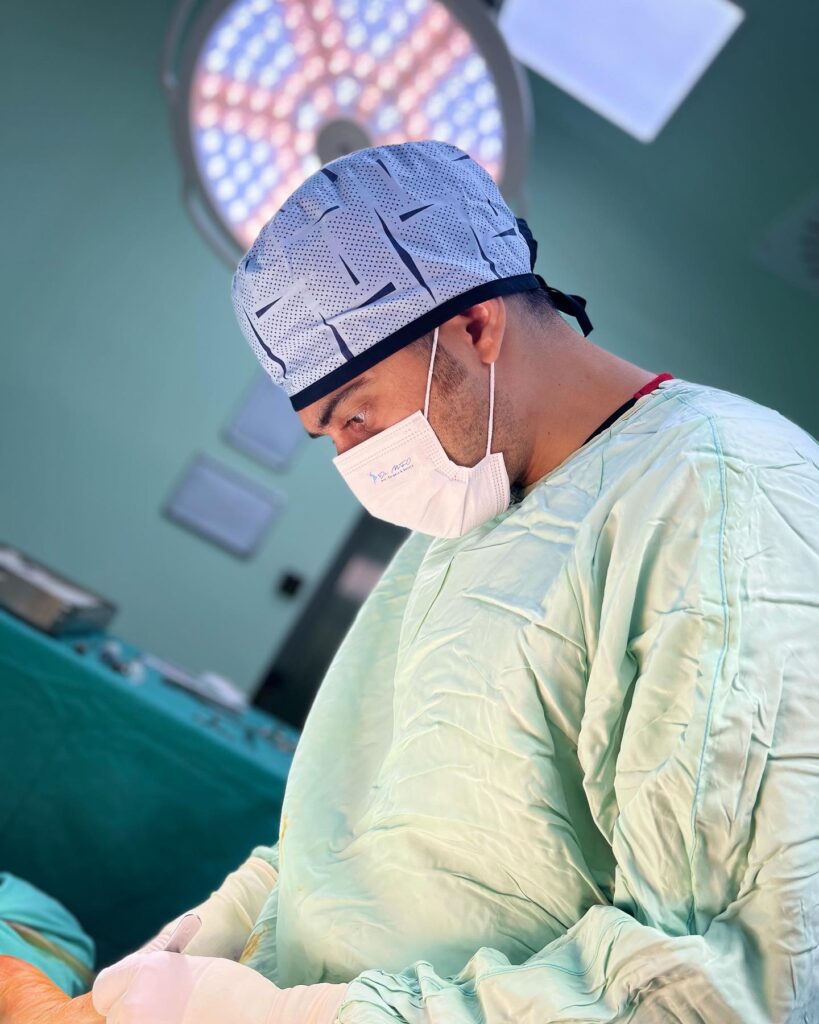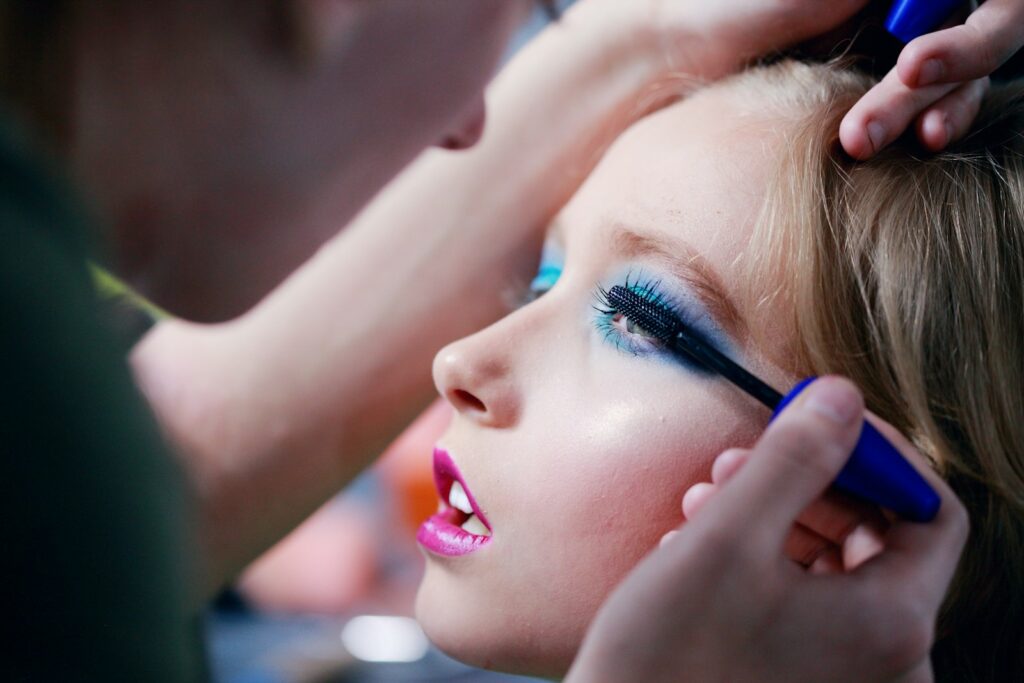What Makes A Man Feminine? Do you feel unhappy with your masculine appearance and want to achieve a more feminine look? If so, you are not alone. Many men, especially transgender women, struggle with their gender expression and desire to have a more harmonious and attractive appearance. But how can you change your appearance? Is it possible to alter your physical features and characteristics? The answer is yes, thanks to gender affirming surgeries.

Table of Contents
What are Gender Affirming Surgeries?
Gender affirming surgeries (GAS) are a type of cosmetic surgery that aims to modify the physical features and characteristics of the body to create a more congruent appearance with one’s gender identity. GAS can include various procedures, such as facial feminization surgery (FFS), body feminization surgery (BFS), genital feminization surgery (GFS), breast augmentation, voice feminization surgery (VFS), and hair transplantation. GAS can also be combined with hormone therapy (HT) and psychological counseling to achieve a complete gender transition.
GAS is not only for transgender women who want to align their physical appearance with their gender identity, but also for cisgender men who want to explore their femininity and diversity. GAS can help men who have a naturally masculine or androgynous appearance, such as a large forehead, a prominent nose, a square jaw, a flat chest, a deep voice, or a receding hairline. GAS can also help men who have experienced changes in their appearance due to aging, illness, or injury.

What Makes A Man Feminine?
There is no definitive answer to what makes a man feminine, as different people may have different preferences and opinions. However, some studies have suggested that the most common and desirable feminine features and characteristics are:
- A small and smooth forehead, with a low and curved hairline, and a high and arched eyebrow.
- A small and narrow nose, with a refined and upturned tip, and a concave and delicate bridge.
- A full and plump cheek, with a prominent and defined cheekbone, and a soft and smooth contour.
- A small and round chin, with a tapered and pointed shape, and a dimple or cleft.
- A slim and soft jawline, with a rounded and oval shape, and a smooth and gentle angle.
- A small and flat Adam’s apple, with a smooth and inconspicuous appearance, and a feminine and melodious voice.
- A full and curved lip, with a lifted and curved upper lip, and a moist and glossy texture.
- A small and perky ear, with a short and narrow shape, and a small and round earlobe.
- A full and round breast, with a large and firm size, and a high and centered nipple.
- A slim and curvy waist, with a narrow and cinched shape, and a feminine and graceful posture.
- A full and round hip, with a wide and flared shape, and a feminine and seductive movement.
- A long and slender leg, with a smooth and toned shape, and a feminine and elegant gait.
However, not all men are born with these feminine features and characteristics, and it can be difficult to acquire them through natural means, such as diet, exercise, makeup, or clothing. That is why many men opt for gender affirming surgeries to create or enhance their feminine appearance.
Which Surgeries Should You Have And In What Order?
If you are interested in having gender affirming surgeries, the first step is to consult with a qualified and experienced plastic surgeon who specializes in GAS. The plastic surgeon will evaluate your medical history, physical condition, and aesthetic goals. The plastic surgeon will also explain the risks, benefits, and costs of GAS. The plastic surgeon will then design a personalized surgical plan that suits your needs and expectations.
The second step is to decide which surgeries you want to have and in what order. There is no fixed or universal order for having gender affirming surgeries, as it depends on various factors, such as your personal preference, your budget, your availability, and your surgeon’s recommendation. However, some general guidelines and suggestions are:
- Start with the surgeries that have the most impact on your appearance and well-being, such as facial feminization surgery, breast augmentation, or genital feminization surgery. These surgeries can help you to achieve a more feminine and congruent appearance, as well as to reduce your gender dysphoria and increase your gender congruence.
- Continue with the surgeries that have the least impact on your appearance and well-being, such as voice feminization surgery, hair transplantation, or earlobe reduction. These surgeries can help you to enhance your femininity and beauty, as well as to improve your self-esteem and confidence.
- Space out the surgeries that have a long recovery time or a high risk of complications, such as forehead contouring, rhinoplasty, or tracheal shave. These surgeries can require several weeks or months of healing and follow-up, as well as to pose some challenges and difficulties, such as bleeding, infection, scarring, or nerve damage.
- Combine the surgeries that have a short recovery time or a low risk of complications, such as lip lift, cheek augmentation, or fat grafting. These surgeries can be performed in one session or in a few days, as well as to offer some advantages and benefits, such as minimal pain, quick recovery, or natural results.
The third step is to prepare for the surgeries. You may need to undergo some tests, such as blood work, chest X-ray, and electrocardiogram, to ensure that you are healthy and fit for the surgeries. You may also need to stop smoking, drinking, and taking certain medications, such as aspirin, ibuprofen, and blood thinners, for a few weeks before the surgeries. You may also need to arrange for someone to drive you home and take care of you after the surgeries.
The fourth step is to undergo the surgeries. Depending on the type and number of procedures you choose, the surgeries may take from one to six hours each. You will be given general anesthesia or local anesthesia with sedation, depending on your preference and the surgeon’s recommendation. The surgeon will make incisions in the appropriate locations and perform the procedures, such as shaving the bone, reshaping the cartilage, lifting the skin, inserting implants, injecting fat, or altering the vocal cords. The surgeon will then close the incisions with sutures, staples, or glue.
The fifth step is to recover from the surgeries. You will need to stay in the hospital or clinic for one or two nights, depending on the extent of the surgeries. You will be given painkillers, antibiotics, and anti-inflammatory drugs to ease the discomfort and prevent infection. You will also need to wear compression garments, drains, and bandages to support the healing process and reduce swelling and bruising. You will need to follow the post-operative instructions given by the surgeon, such as avoiding strenuous activities, lifting heavy objects, and sleeping on your back or side. You will also need to attend regular follow-up visits to monitor your progress and remove the sutures, staples, or drains.
The final step is to enjoy the results of the surgeries. You will be able to see some improvement in your appearance immediately after the surgeries, but the final results will take several months to appear, as the swelling and bruising subside and the tissues settle. You will need to maintain a healthy lifestyle, such as eating a balanced diet, exercising regularly, and avoiding smoking and drinking, to preserve the results of the surgeries. You will also need to protect your skin from sun exposure and use scar creams or silicone sheets to minimize the visibility of the scars.
Conclusion
Gender affirming surgeries are a type of cosmetic surgery that can help men to achieve a more feminine and attractive appearance. GAS can include various procedures, such as facial feminization surgery, body feminization surgery, genital feminization surgery, breast augmentation, voice feminization surgery, and hair transplantation. GAS can improve the quality of life and well-being of men who want to explore their femininity and diversity, as it can boost their self-esteem, confidence, happiness, and gender expression. GAS can create or enhance the feminine features and characteristics of the face and body, such as a small and smooth forehead, a small and narrow nose, a full and plump cheek, a small and round chin, a slim and soft jawline, a small and flat Adam’s apple, a full and curved lip, a small and perky ear, a full and round breast, a slim and curvy waist, a full and round hip, and a long and slender leg. GAS requires consultation, decision, preparation, surgery, recovery, and maintenance to achieve the best results.

Dr. MFO is a plastic surgeon and gender reassignment specialist located in Antalya, Turkey. Dr. MFO has years of experience and international certifications in female to male or male to female conversion surgeries. Dr. MFO uses modern technology and techniques to offer his patients the best results and the most affordable prices. Dr. MFO supports his patients psychologically and physically during the gender reassignment process and makes their dreams come true. To contact Dr. MFO, you can visit his website or make an appointment at his phone number.
Visit the Dr.MFO Instagram profile for examples of successful Surgeries. Contact for free consultation.
FAQ
What makes a man feminine?
There is no one answer to this question. Femininity is a social construct and can vary depending on culture, time period, and individual interpretation. Some people may associate femininity with certain physical characteristics, such as long hair or a high-pitched voice. Others may associate femininity with certain personality traits, such as empathy or sensitivity. Ultimately, what makes a man feminine is subjective and can vary from person to person.
Which surgeries should you have and in what order?
The decision to undergo gender-affirming surgery is a personal one and should be made in consultation with a qualified healthcare provider. The specific surgeries that a person may choose to undergo depend on their individual needs and goals. Some common surgeries for transgender women include breast augmentation, facial feminization surgery, and vaginoplasty. For transgender men, common surgeries include chest masculinization, hysterectomy, and phalloplasty. The order in which these surgeries are performed can vary depending on the individual’s needs and goals, as well as their overall health and well-being.
What is feminizing surgery?
Feminizing surgery, also known as gender-affirming surgery or gender-confirmation surgery, is a set of surgical procedures that help align a person’s physical appearance with their gender identity. These procedures can include breast augmentation, facial feminization surgery, and vaginoplasty, among others. The specific procedures that a person may choose to undergo depend on their individual needs and goals.
What is gender dysphoria?
Gender dysphoria is a medical condition in which a person experiences discomfort or distress because their gender identity differs from their sex assigned at birth. This condition can manifest in a variety of ways, including anxiety, depression, and social isolation. Gender-affirming treatments, such as hormone therapy and surgery, can help alleviate gender dysphoria and improve a person’s quality of life.
What is top surgery?
Top surgery is a type of gender-affirming surgery that involves altering the chest to create a more masculine or feminine appearance. For transgender men, top surgery typically involves a mastectomy, or removal of breast tissue. For transgender women, top surgery typically involves breast augmentation.
What is bottom surgery?
Bottom surgery is a type of gender-affirming surgery that involves altering the genital region to create a more masculine or feminine appearance. For transgender women, bottom surgery typically involves vaginoplasty, or the creation of a vagina, labia, and clitoris. For transgender men, bottom surgery typically involves phalloplasty, or the creation of a penis.
What is facial feminization surgery?
Facial feminization surgery is a type of gender-affirming surgery that involves altering the face to create a more feminine appearance. This can include procedures such as rhinoplasty, or nose reshaping, and brow lift surgery.
What is a tracheal shave?
A tracheal shave is a type of gender-affirming surgery that involves reducing the size of the Adam’s apple. This procedure can help create a more feminine appearance in transgender women.
What is voice feminization therapy?
Voice feminization therapy is a type of treatment that can help transgender women achieve a more feminine-sounding voice. This can involve exercises to strengthen the vocal cords, as well as speech therapy to help modify speech patterns.
What is gender confirmation surgery?
Gender confirmation surgery is another term for gender-affirming surgery. This type of surgery can help transgender people feel more comfortable in their bodies and improve their quality of life.










